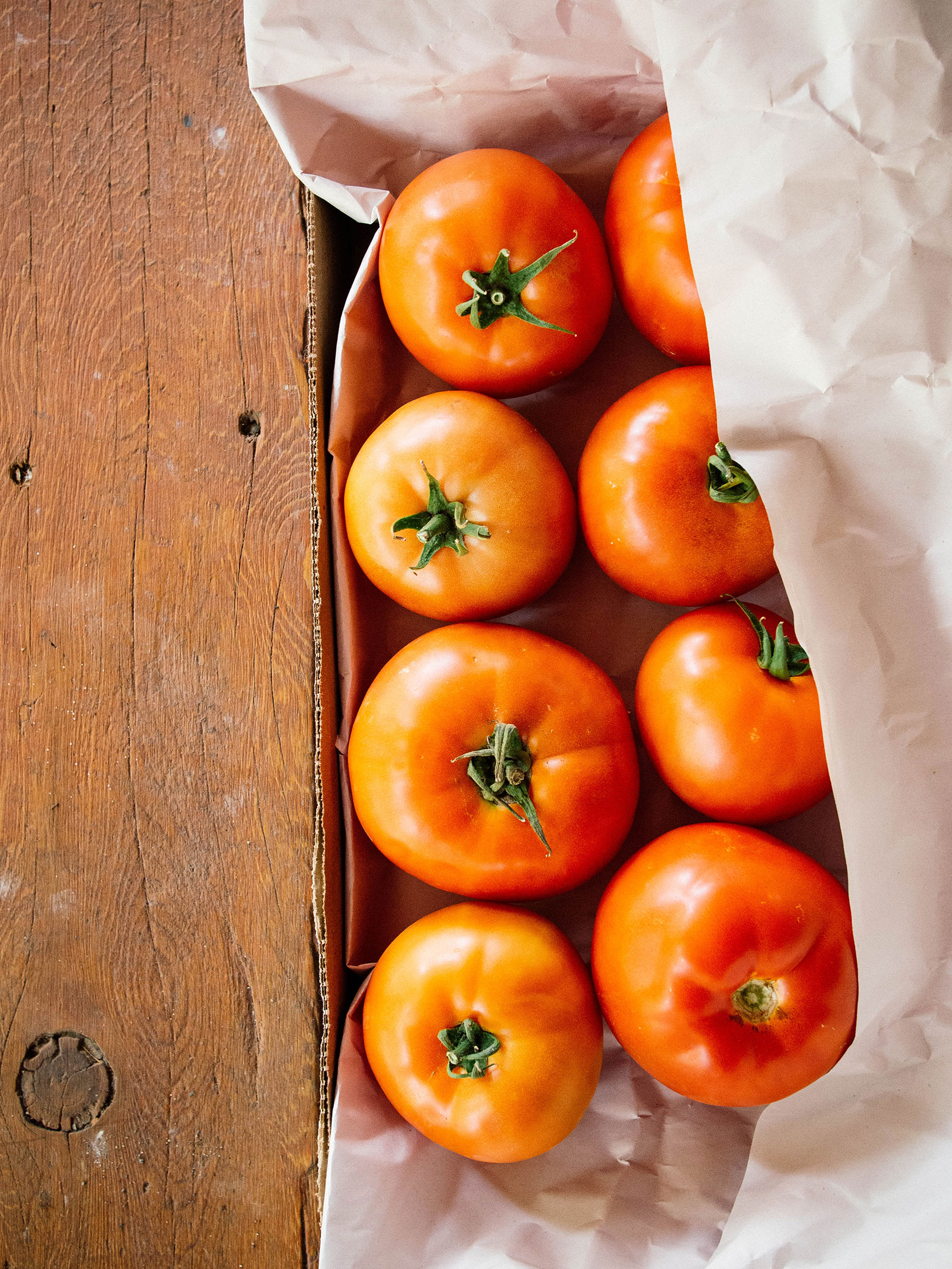As summer starts to wind down, no doubt you probably have a few tomato plants still chugging along in the garden.
If they’re anything like mine, they usually start to look a bit bedraggled this late in the season: the leaves get a little crispy or splotchy, maybe a mystery disease begins to crop up. But through it all, there are still green tomatoes stubbornly hanging on the vines.
In climates where you still have a few weeks left before the expected first frost, you can speed up the ripening process and help your tomatoes turn red a lot sooner by putting the plants “in distress.” This signals the plants to stop putting out new stems and blossoms, and start maturing the fruits they’ve already produced.
But if early frost warnings have you worried about whether your plants will even make it outside this week, there is a way to get those green tomatoes to the finish line faster—in fact, three ways.

It starts with fully developed green tomatoes
First, you have to pick those tomatoes early so you can ripen them indoors.
In fact, I sometimes recommend that people harvest tomatoes early even if they live in a mild climate. That’s because the best time to pick a tomato for the best quality isn’t always when it’s red and ripe; if you leave it on the vine too long, you risk losing it to pests, diseases, heavy rains, or other environmental factors.
But the key is picking green tomatoes when they’re fully grown.
Forget the babies that are still half the size of what they should be—they won’t make it to maturity. Harvest only the green tomatoes that are fully developed.
How can you tell when they’re fully developed? If you have a cluster of green tomatoes on a vine, cut into a sacrificial fruit and check the flesh. If it looks gelatinous, then it’s likely the cluster has a chance of ripening after harvest.
Don’t worry about the oft-repeated misconception that vine-ripened tomatoes are superior to indoor-ripened tomatoes.
Once a tomato has grown to full size, it goes through a natural and methodical process where the color changes, the flesh softens, and the sugar content increases as it ripens. This can happen on or off the vine—it doesn’t matter!
(That said, I think we’re all psychologically trained to favor a warm, juicy, sun-ripened tomato straight off the vine.)
Once you’ve identified and harvested all the fully grown green tomatoes (and all the tomatoes that are starting to turn color), use one of the methods below to get them to ripen inside the house.
The “Paper Bag Method”
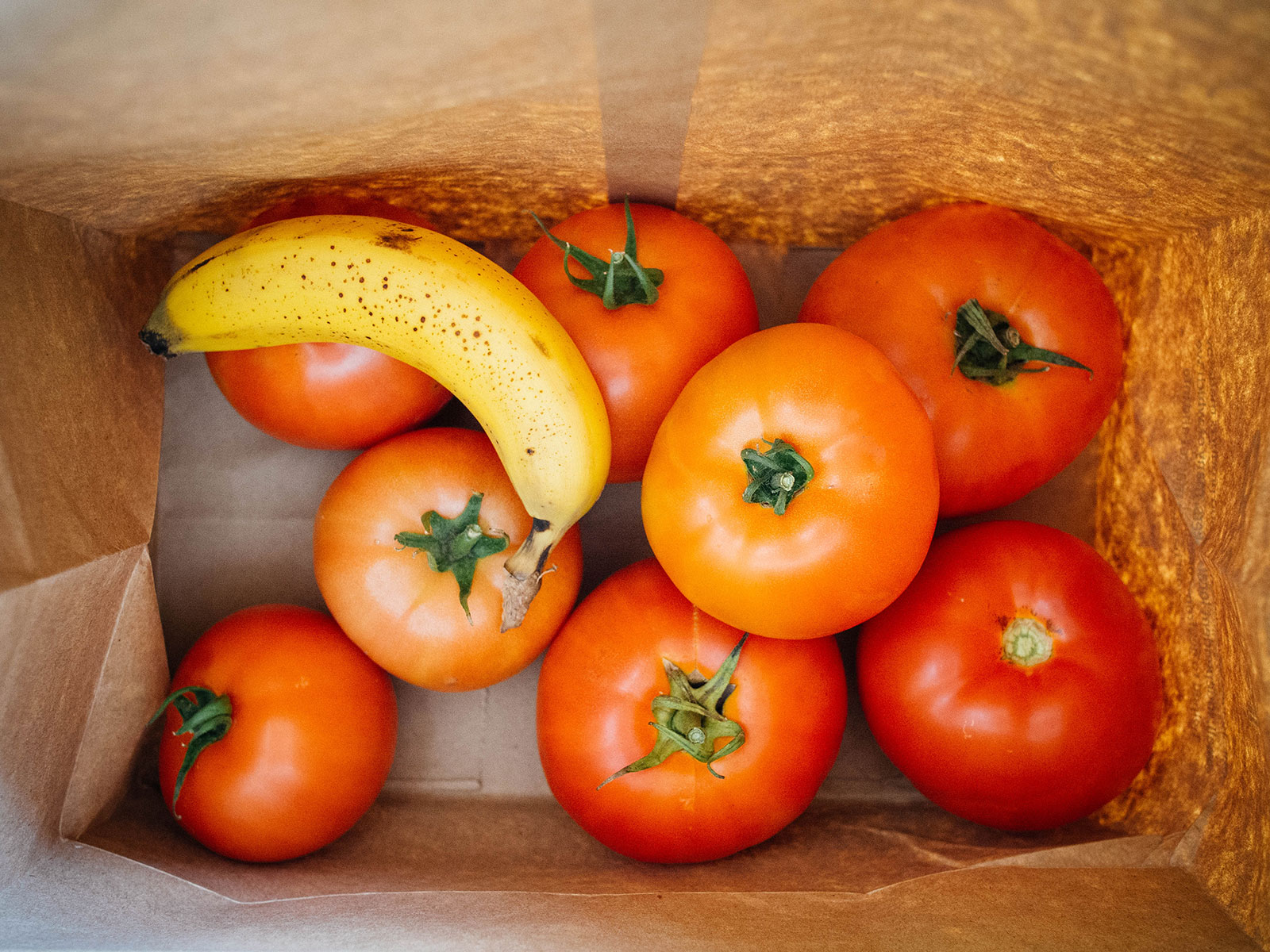
This age-old method for ripening tomatoes quickly has been tried and true for generations.
That’s because it takes advantage of an odorless, colorless chemical called ethylene gas. Ethylene is a major plant hormone that occurs naturally in tomatoes and other climacteric fruits. When these fruits start to ripen, they release ethylene, which speeds up the ripening process of other nearby fruits.
To ripen your tomatoes this way, simply place a few unripe, unblemished tomatoes inside a paper bag. Don’t smush them in there; you want a little airflow so the fruits don’t mold.
Add a ripe banana, apple, or pepper to the bag and loosely seal it. (I just fold the top over a few times so it stays closed.)
Place the bag in a warm spot and the tomatoes should ripen in one to two weeks, depending on how much color they had in the beginning.
If you’re wondering why you couldn’t just use a plastic bag or zip-top bag, well, technically you can. You’ll trap more ethylene this way, but you’ll also trap moisture, increasing the chances of mold.
The “Newspaper Method”
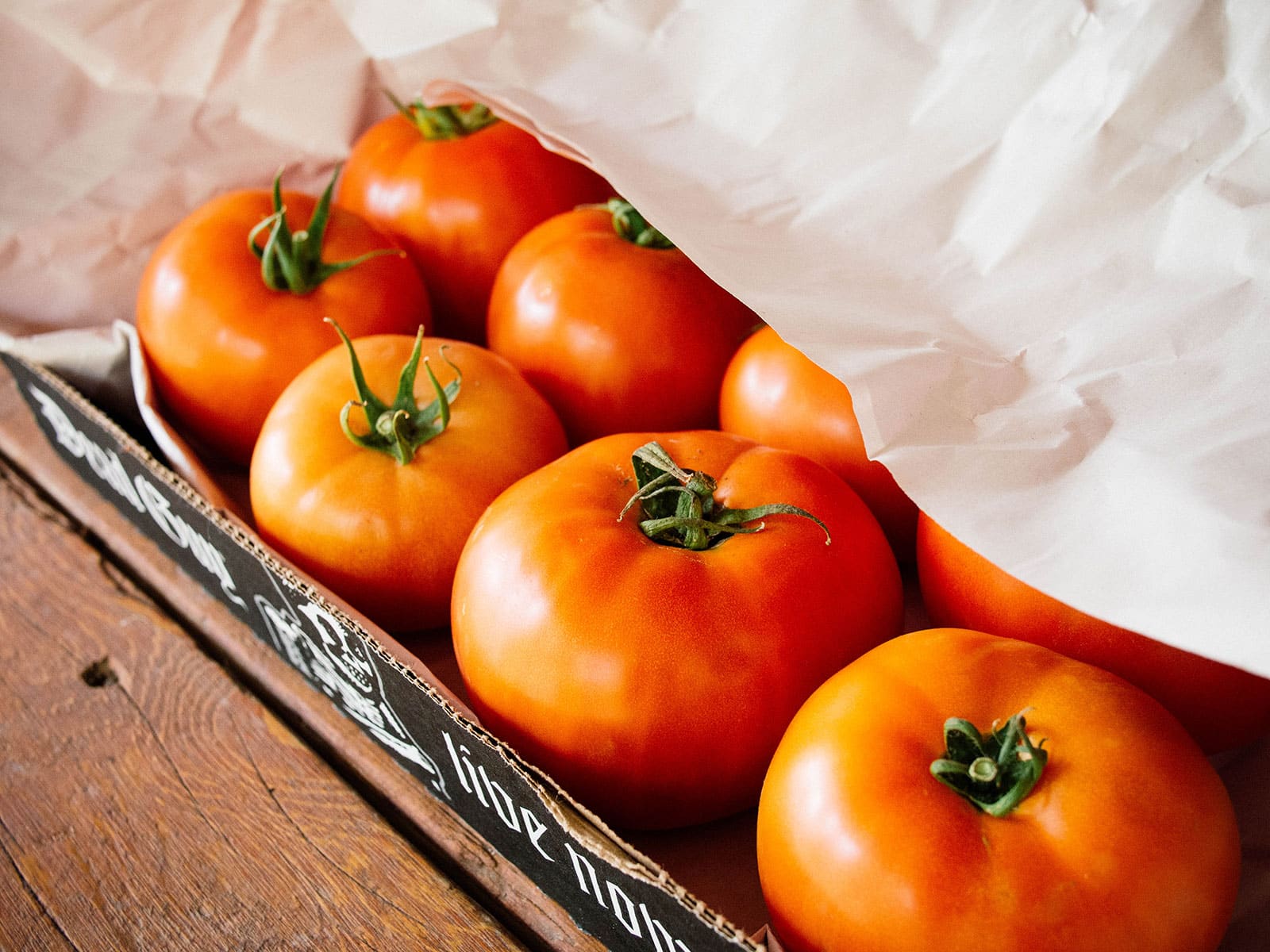
This is similar to the paper bag method above, and it’s a great way to bulk ripen a batch of tomatoes if you got a bumper crop at the end of the season.
Collect only healthy, unbruised tomatoes. Find a large but shallow cardboard box (think banana boxes, cardboard trays and such). Place the tomatoes in a single layer at the bottom, cover with a few sheets of newspaper or newsprint, add another layer of tomatoes, then cover with more sheets of newspaper.
I don’t recommend going more than two or three layers of tomatoes, as checking for ripeness can be tedious if you have a tall stack.
As the tomatoes gradually ripen, they’ll release ethylene that encourages the other tomatoes to ripen as well. The warmer the spot you put them in, the faster they’ll ripen.
Conversely, the cooler the spot, the slower they’ll ripen. If you have trouble keeping up, consider putting the box of tomatoes in a basement or an unheated garage so they’ll ripen over the course of a few weeks.
The “Hanging Method”
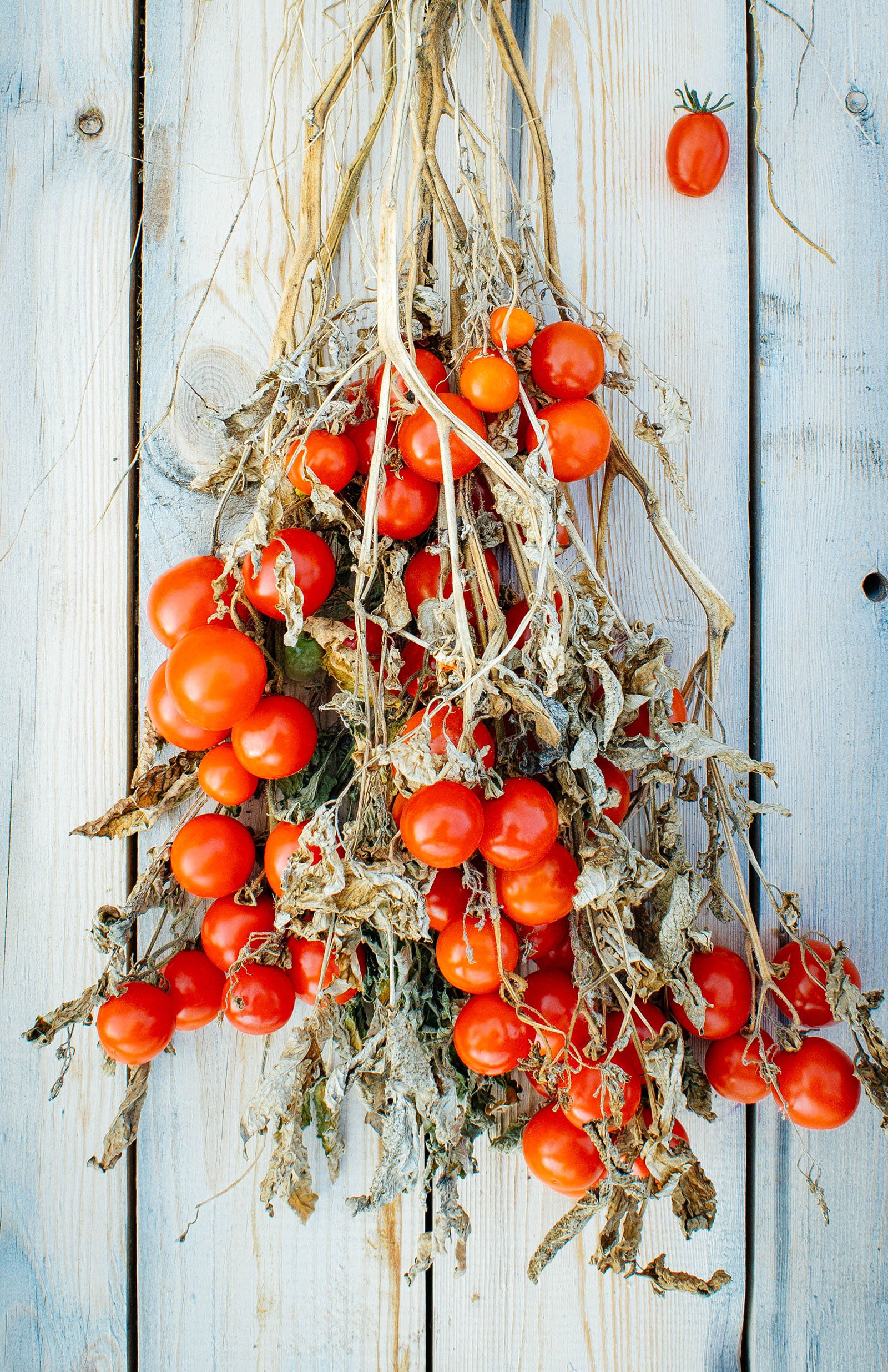
The “Hanging Method” is what I like to use when I’m cleaning up the garden in fall but still have several tomato plants persisting. I find a vine that has lots of green tomatoes, cut the whole stem, then tie a string around the bottom of the stem (making a little loop for hanging).
The stem (with the bunch of tomatoes and all) gets hung wherever there’s space in the house or garage; this can be on the back of a door, on a utility hook, or even a hanger in a spare closet.
(You can see how my vines here are simply suspended from a paddleboard rack in the garage—absolutely nothing fancy about my setup.)
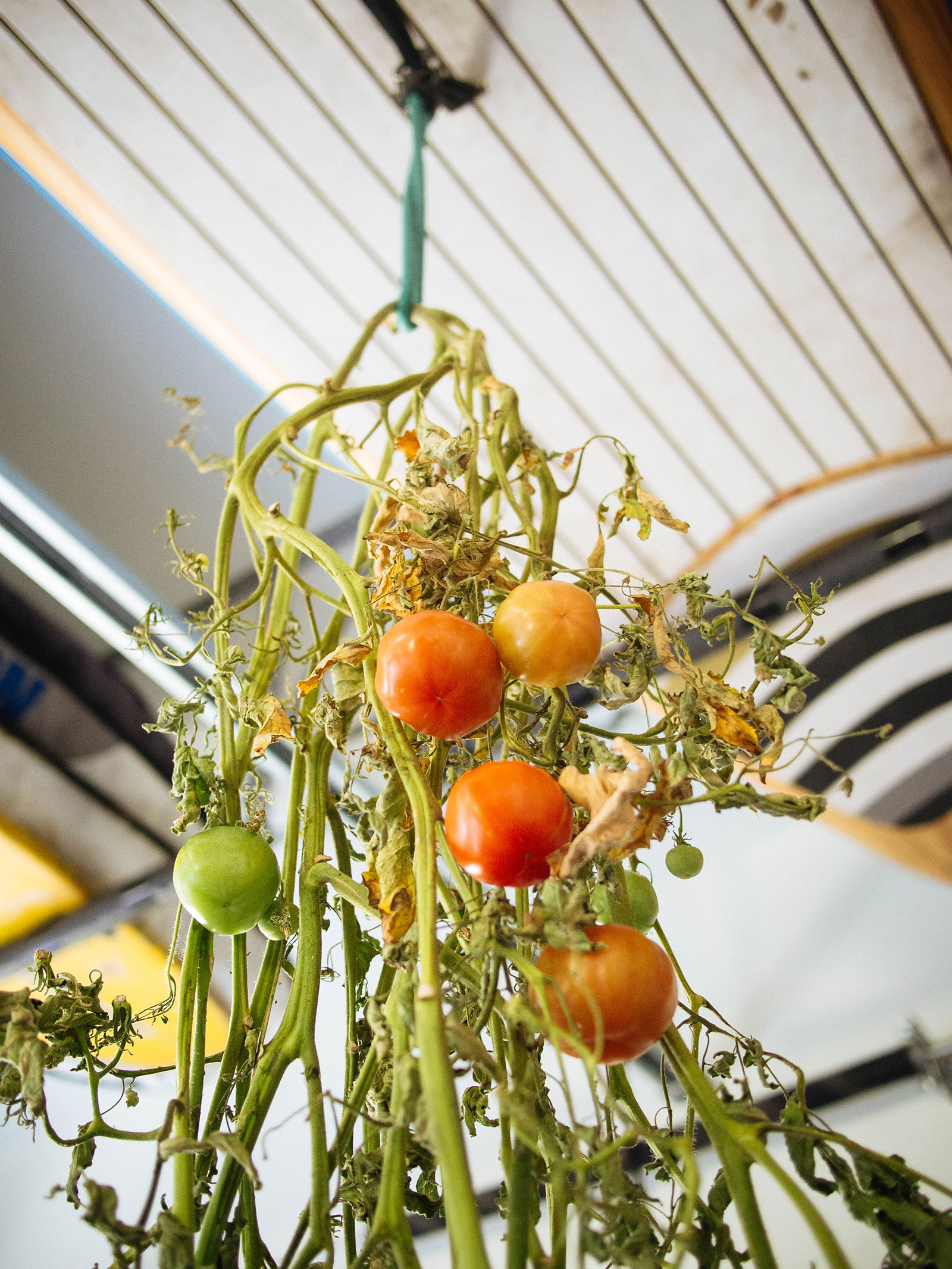
Not all of the tomatoes will ripen this way (since some of them may not be fully developed), so be sure to keep an eye on them each week and immediately remove any that show signs of rot.
By hanging the stem in a cooler spot out of direct sunlight, you can effectively extend your fresh tomato season by a month or more! Each week as you need tomatoes for your meals, pull a few half-ripe tomatoes off and put them on your kitchen counter to ripen quicker.
Use temperature to control the speed of ripening
Tomatoes need warmth, not sun, in order to ripen. You can use this to your advantage by strategically ripening your tomatoes in different areas of your home based on when you want to use them.
To slow down the ripening process: Keep the tomatoes at temperatures between 50°F to 65°F. This could be a basement, a closet on the north side of a house (which is what I do), or an unheated garage.
If I pick very hard, very green (but full grown) tomatoes in late September when we typically have our first frost, I can store them this way—on the cooler side of things—and get fresh, ripe tomatoes in November!
To speed up ripening: Store tomatoes in a warmer area; typical room temperatures of 68°F to 75°F are ideal for moving things along quickly. For most people, this is as simple as leaving the tomatoes on the counter or in a pantry.
If the tomatoes already have some color on them, they can ripen in as little as a few days this way. Very green tomatoes may take a week or more to fully turn color.
More tomato growing posts to explore:
- Grow Tomatoes Like a Boss With These 10 Easy Tips
- How to Grow Tomatoes in Pots—Even Without a Garden
- How to Best Fertilize Tomatoes for the Ultimate Bumper Crop
- How to Repot Tomato Seedlings for Bigger and Better Plants
- Why and How to Transplant Tomatoes (a Second Time)
- Planting Tomatoes Sideways: How Growing in a Trench Results In Bigger Healthier Plants
- Florida Weave: A Better Way to Trellis Tomatoes
- Conquer Blossom End Rot and Save the Harvest
- Can You Eat Tomato Leaves? The Answer Will Surprise You
- Why Tomato Leaves Have That Unique Smell
- The Power of Fermenting and Saving Tomato Seeds
- 4 Fastest Ways to Ripen Tomatoes in the Garden and Beat the First Frost
- The 30 Best Tasting Heirloom Tomato Varieties (By Color!)
- 83 Fast-Growing Short-Season Tomato Varieties for Cold Climates
- The Best Time to Pick Tomatoes for Peak Quality (It’s Not What You Think!)


